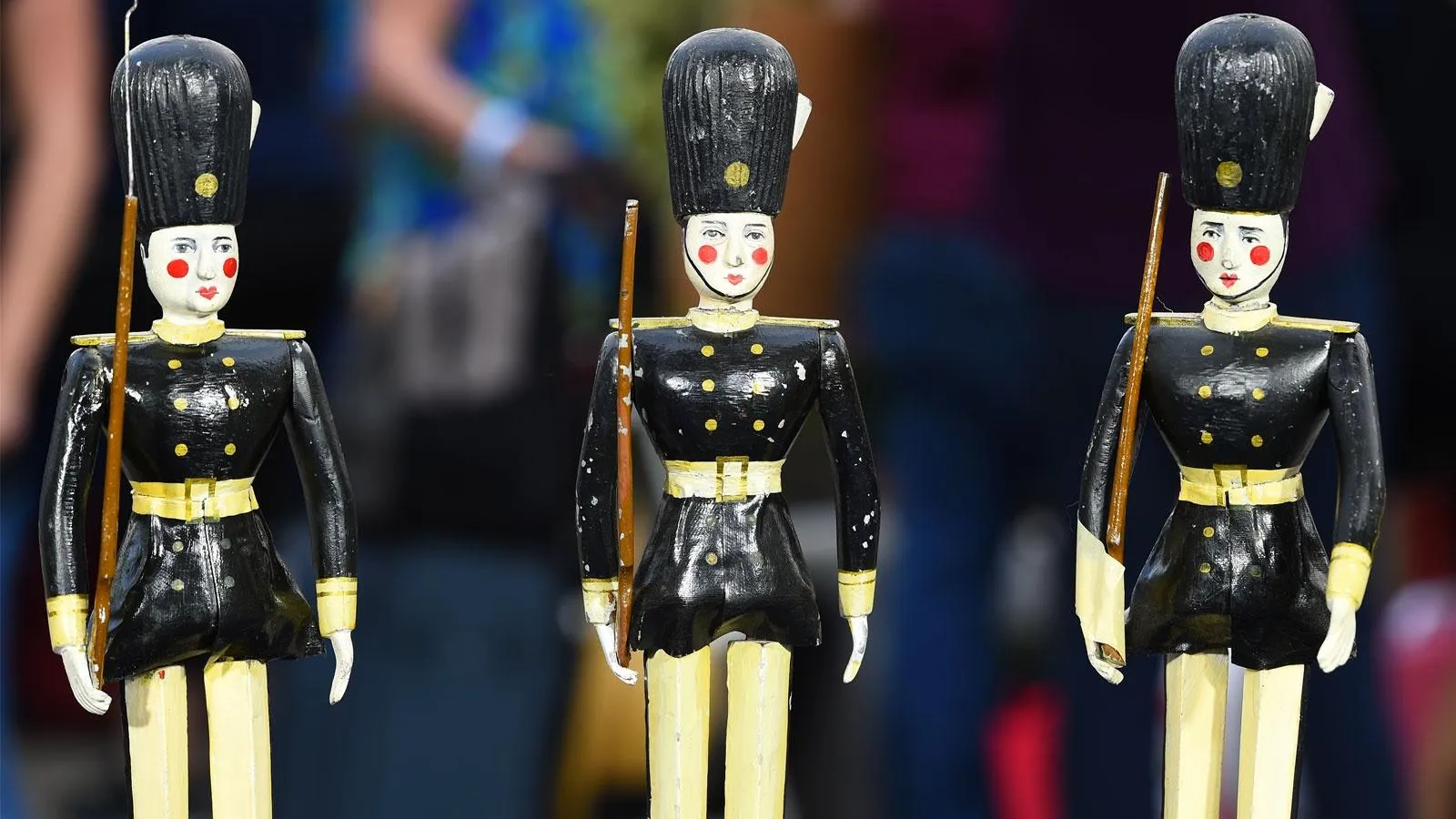GUEST: I acquired them from my dad in 1937. He sold newspapers on Market Street, and I guess these were positioned on the streetlamps and he may have climbed up to take him down, I'm not sure. (laughs)
APPRAISER: You never got the full story?
GUEST: Never got the full story.
APPRAISER: So we can, we can invent one about maybe him climbing up and taking them down.
GUEST: Sure.
APPRAISER: And then he, did he also go across the bridge, too?
GUEST: Yes, he did walk the bridge, and this was a certificate showing that he walked the bridge before automobile traffic.
APPRAISER: Right, because in 1937, the bridge opened.
GUEST: Yes.
APPRAISER: And it opened with huge fanfare. "Fiesta" in Spanish is "party," but Fiesta was the name of the actual event. It was a week of events. President Roosevelt, I think, telegraphed the official opening, and there were all kinds of, uh, fireworks and parties and, and, just, it was just a big exciting time. So it went for a week, but the first day was Pedestrian Day, when you could walk the bridge before they had opened it up to automobile traffic.
GUEST: Mm-hmm. I understand the weight of all the pedestrians on the Bridge caused it to sag.
APPRAISER: Right, well, the whole point of a suspension bridge is that it's gonna move, it's gonna have some give. There were, like, 18,000 people waiting in line to get across the bridge, and I think the whole day, there were 200,000 folks that actually walked across that bridge that day, and a couple of people actually roller-skated that day across the bridge.
GUEST: Mm-hmm, mm-hmm.
APPRAISER: So, it was a big day. And obviously, they would have needed banners to commemorate it, to get people excited, just like we see, you know, banners today. And what's exciting about these banners is because of the connection to California and the Golden Gate Bridge. And really, it's one of our cultural icons, not only in the United States, but internationally—people come to see it. That said, they're great display items, they look exciting. They're, uh, screen-printed on cotton, and then they've got this wonderful kind of, like, probably, like, a wool fringe at the end here. At the time, pretty easy to make, but it's, they visually have a very impactful design. One says "Golden Gate Bridge" and then "Fiesta," and this one, in Spanish, just says "Come and have fun." Then you have the symbol for the city of San Francisco with the dates of the Golden Gate Bridge opening. So you, your, the appeal here is to California folks, the appeal is to people who just, you know, have a, an affinity for the city, for San Francisco, and who are just, are big fans of the bridge. So, do you remember anything else about these growing up? I mean, how were they first introduced to you? Where did you first kind of discover them?
GUEST: Well, they were in my dad's memento drawer, and a year or so after he passed, I found them in the, in the drawer.
APPRAISER: But no stories growing up? No kind of, beyond...
GUEST: No, he, he loved, loved the bridge, and in fact, uh, his ashes are spread below the Golden Gate Bridge.
APPRAISER: Really?
GUEST: Yeah.
APPRAISER: Now, how, how did that happen?
GUEST: He met my mom in San Francisco at the Avalon Ballroom and ended up getting married, and rest is history.
APPRAISER: So this has really factored very importantly to, in his life, as well.
GUEST: Yes, very important.
APPRAISER: You inherited them, so you didn't pay anything for them. And, you know, you're probably never going to sell them, and they're an important part of your family, so sentimental value, quite high.
GUEST: Yes.
APPRAISER: But the reality is, there is a market for this kind of thing. The ticket is, on its own, is pretty cool, even though a lot of folks did cross. A ticket like that can sell for around $30 to $50 at auction. But the banners themselves, what's neat about them, you've got one in English and one in Spanish. Realistically at auction, individually, these are worth about $500 apiece. So you've got about $1,000-plus worth of material here. And again, priceless to your family.
GUEST: Mm.
APPRAISER: So I, I thank you for bringing them in, and I just love them.
GUEST: Great, thanks very much.











